Tagine or Tajine („طاجن“) refers to a North African cookware made of clay or ceramic. The bottom is a shallow dish, while the top has the shape of a cone. This shape allows the food to be cooked gently without oil while the liquid circulates in the vessel. It evaporates at the bottom and condenses on the lid.
This is ours:
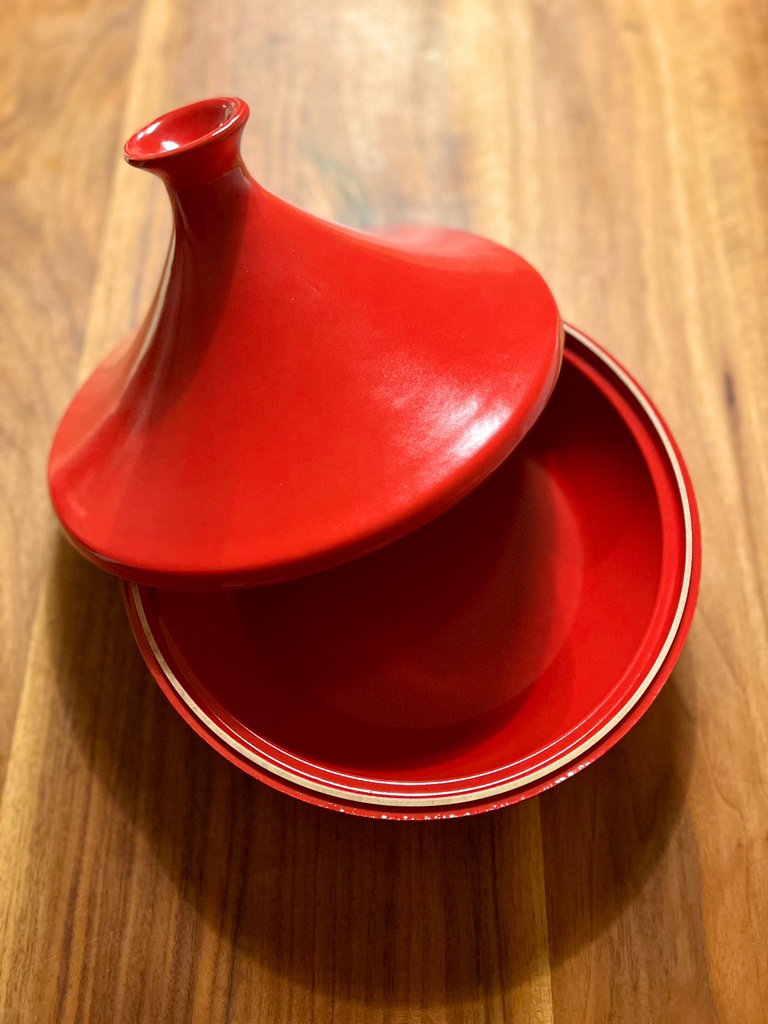
Also, the word tagine refers to the stew-like dishes themselves, which are cooked in this way. There are endless combinations with and without meat, fish, vegetables and (dried) fruits. There is therefore never “one” recipe for “one” tagine. We only explain technique and give inspiration. You should combine whatever you like.
Cooking tagines enriches every kitchen. It’s also healthy, easy and perfect for vegetarians and vegans. We therefore recommend purchasing such cookware.
Many Tagine dishes cannot be used on an induction stove. However, they can all be used very well in the oven.
If you don’t have a tagine, you can also use an ovenproof dish with a tight-fitting lid. However, the result will be different.
Now to work:
We need eggplants and chickpeas, obviously. As we haven’t had the time to soak dry chickpeas overnight, we use chickpeas from a jar, preserved only in water and salt.
We also add some carrots, onions and garlic (feel free to add ginger as well). On top we use potatoes to replace a couscous on the side, as we want to prepare a one-pot-dish that completes itself while we watch a movie.
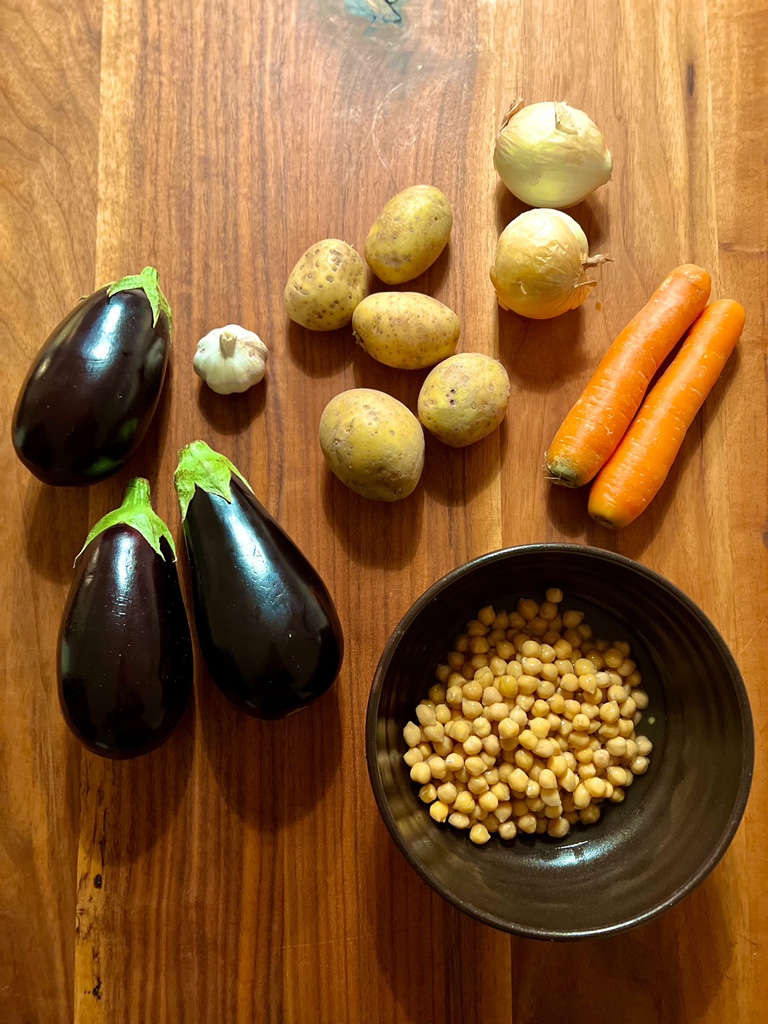
Remove the stem of the eggplants and cut them into slices. We want the eggplants chunky and therefore cut the slices a little thicker.
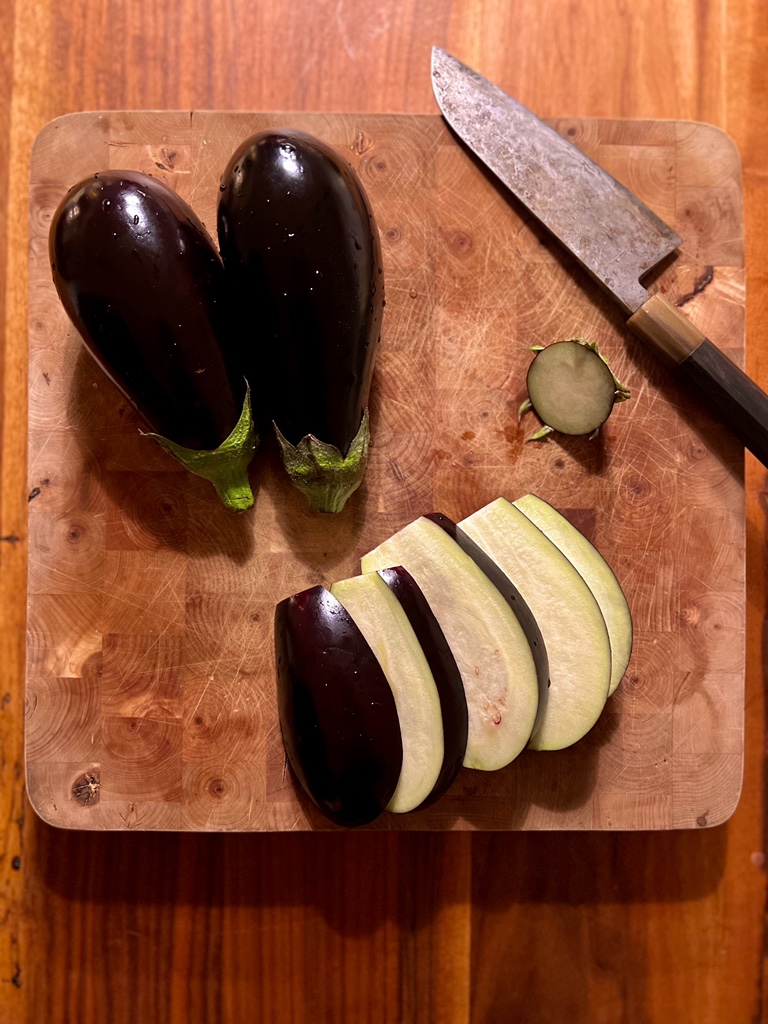
You could skip the next step, but you shouldn’t: it makes the eggplants much more flavourful and gives them a better texture.
Salt them generously on both sides (except for the skin, where it has no effect). Then transfer them on to a kitchen towel. They will lose quite some moisture.
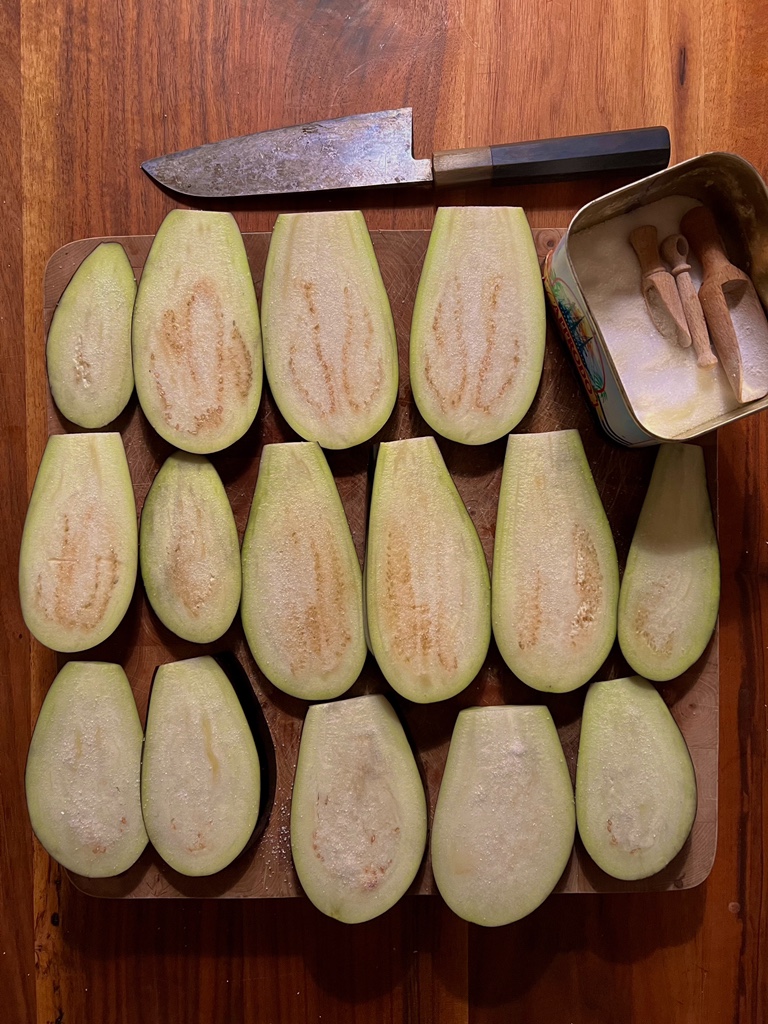
After 20 minutes or more, quickly wash off the salt under running water and dab the slices dry again.
Cut the peeled potatoes into wedges and soak them in water to prevent them from discolouring.
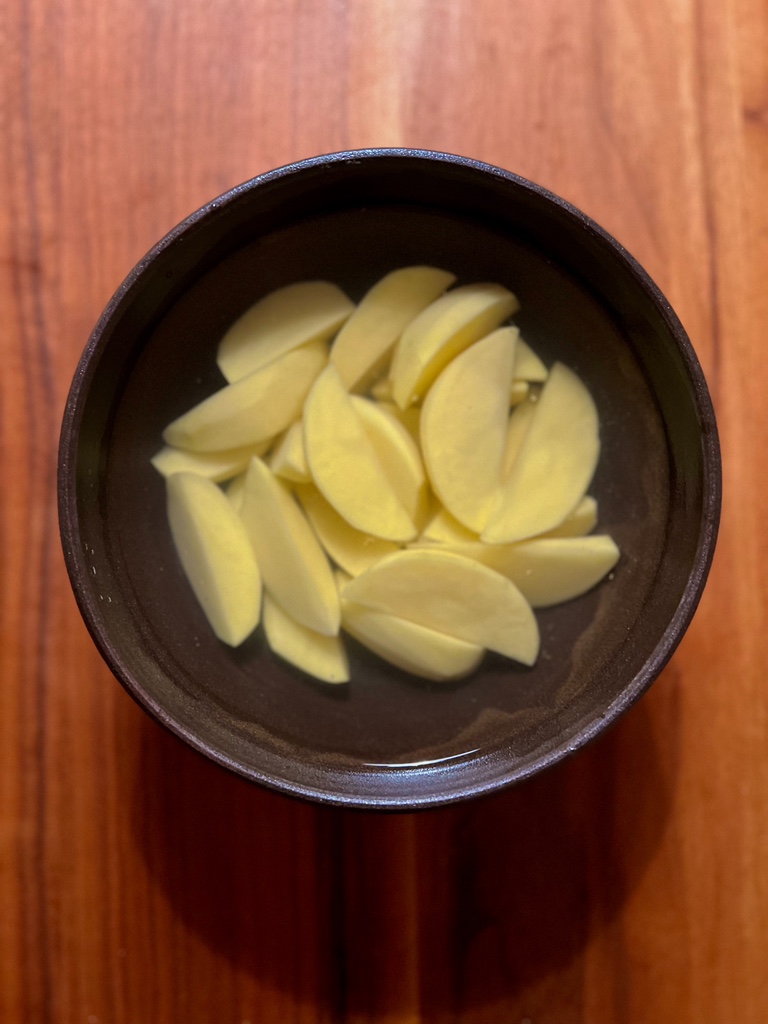
Cut the eggplants and the carrots to your liking.
We will explain different cutting techniques (especially Japanese!) elsewhere.
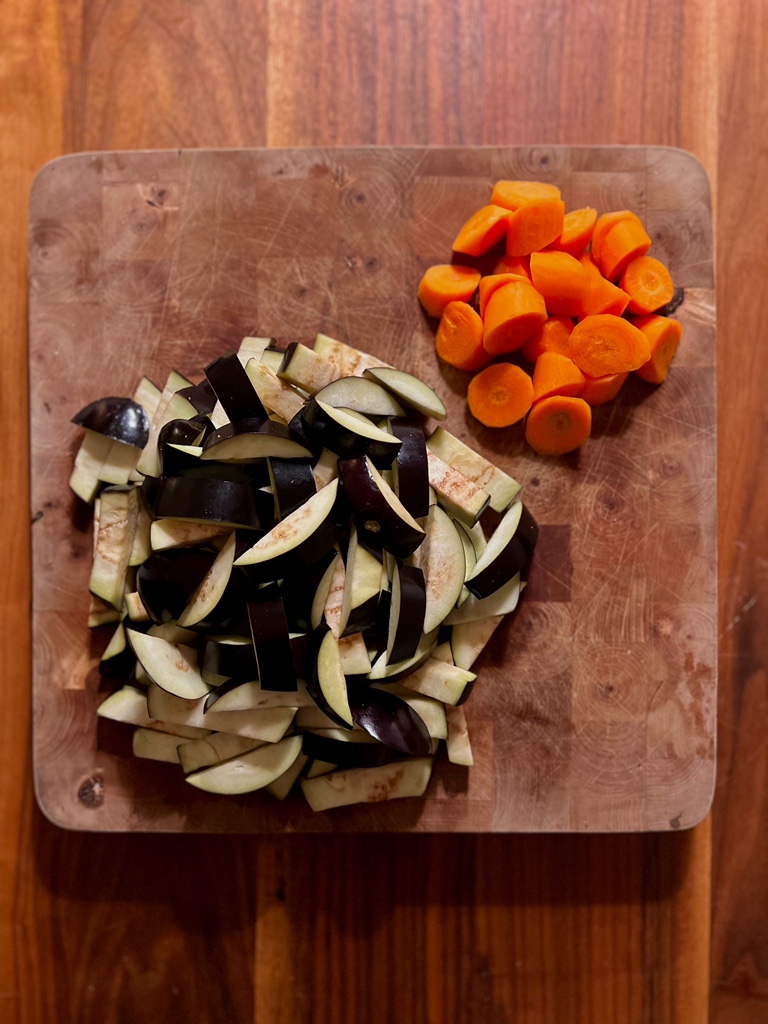
Chop the onions. A good way to do this is to cut off the tip and then cut the onion lenghtwise in half. It is now very easy to peel these halves, while the root of the onion holds it together. You then cut the halves lengthwise without cutting through the root, which makes it easy to finally dice them into squares.
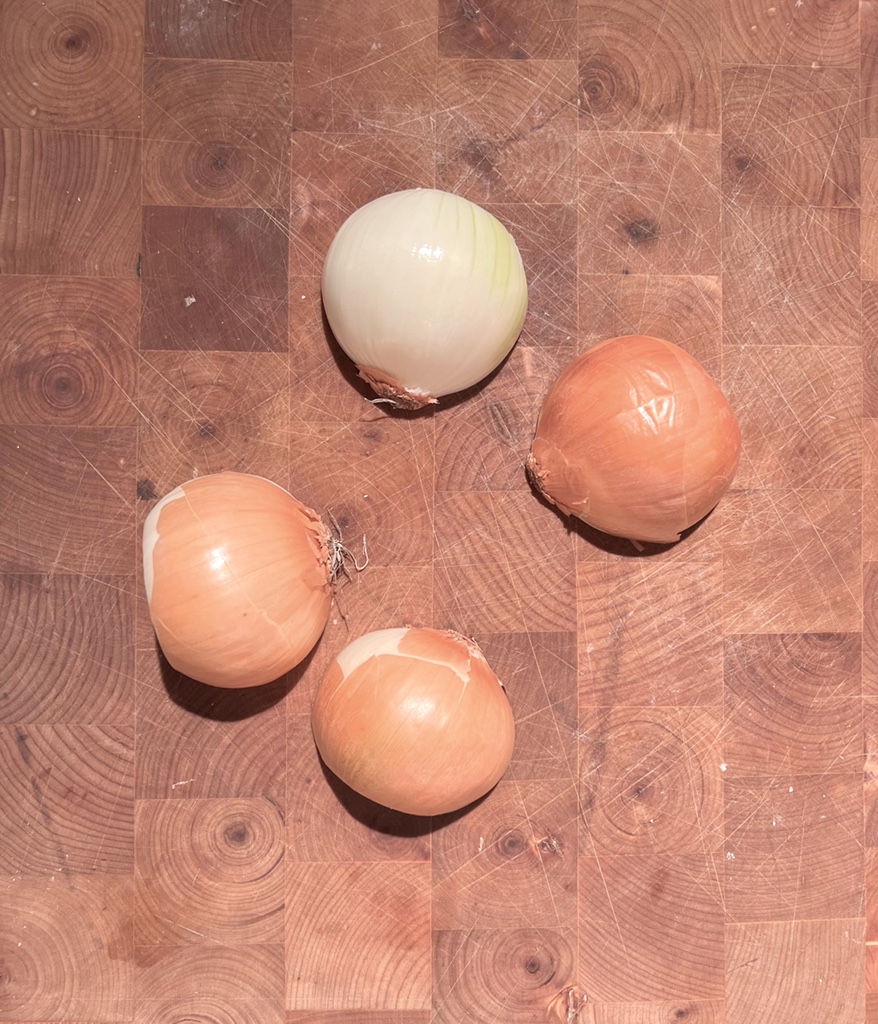
Peel and cut the garlic (and some ginger if you want to add it). We wanted the garlic in slightly larger pieces. You can find a good technique for peeling garlic as well as ginger in our recipe “Besan ka puda“.
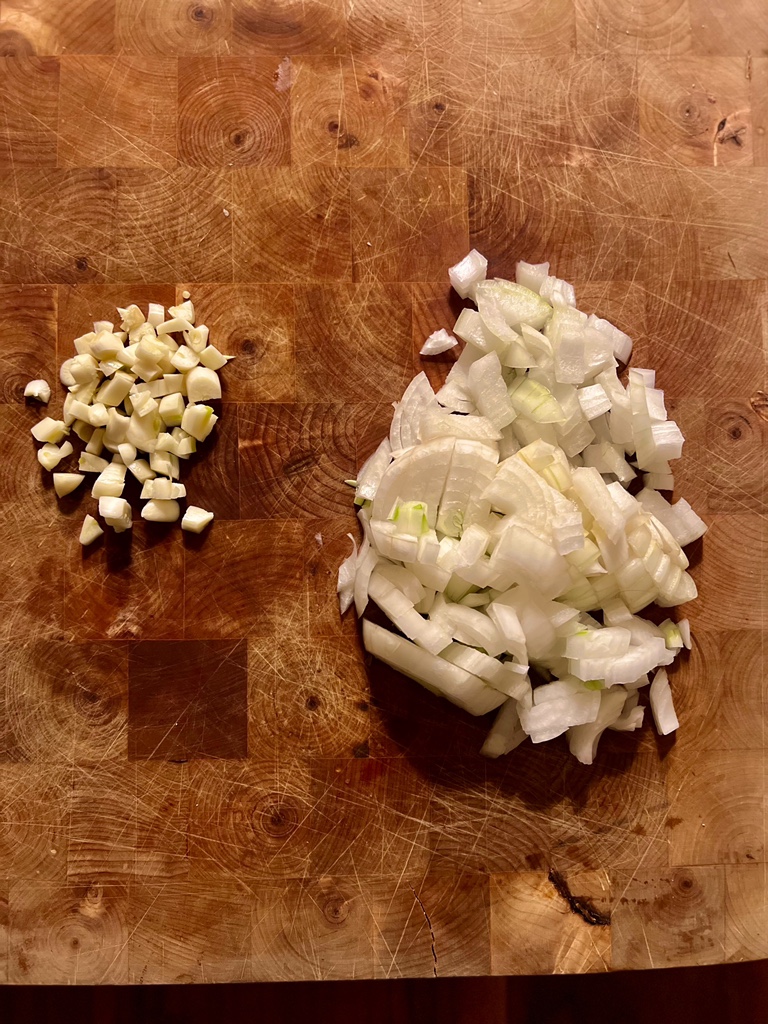
With only very little olive oil, we fry our eggplant sticks slightly brown, for even more flavour and better texture. This step is optional but recommended.
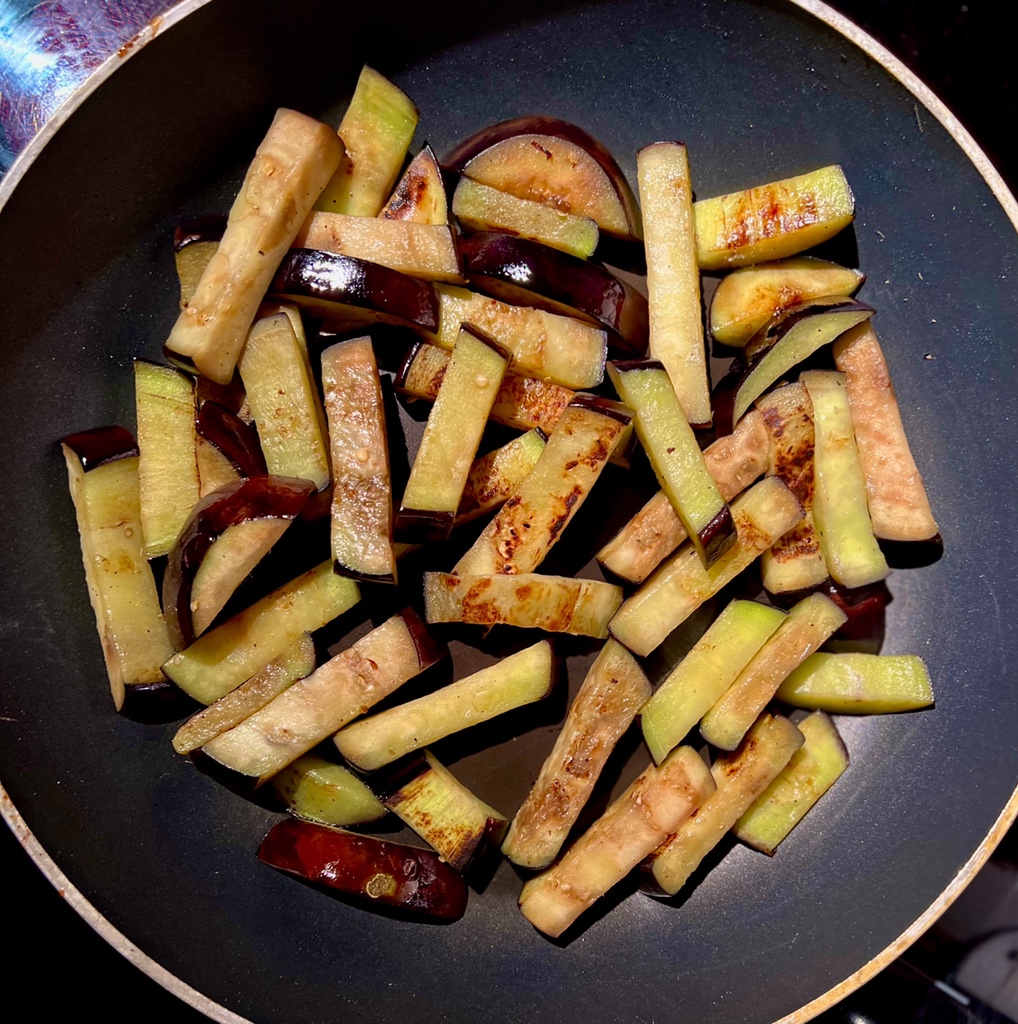
All veggies apart from the onions and the garlic go into the tagine.
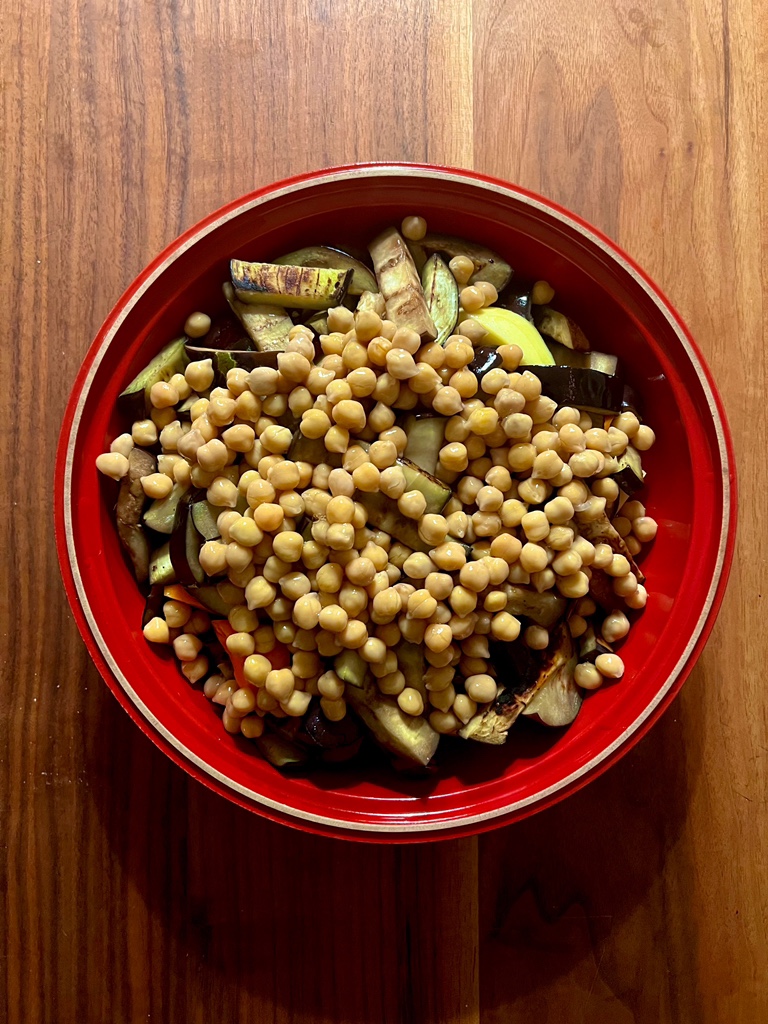
You can now also put in the onions and garlic and make a vegan dish. But we chose to sauté the onions and garlic with some minced organic beef and add this.

Time for spices. We recommend the traditional, North African spice mixture Ras el-Hanout (“رأس الحانوت“), which sometimes contains up to 30 (!) delicious ingredients. Our blend contains turmeric, coriander, allspice, cinnamon, chilies, pepper, cardamom, ginger, cumin, fennel, nutmeg, star anise, orange peel, fenugreek seed and bay leaves.
We cook for four people and add four generous teaspoons of Ras el-Hanout plus one teaspoon extra for good measure. We also add some extra chili because we like it spicy.
You could also add tomatoes to this dish, but we wanted it less sweet and more earthy, like the colours of the Maghreb. That’s why we added a little more turmeric as well.
Our kitchen is already wonderfully scented!
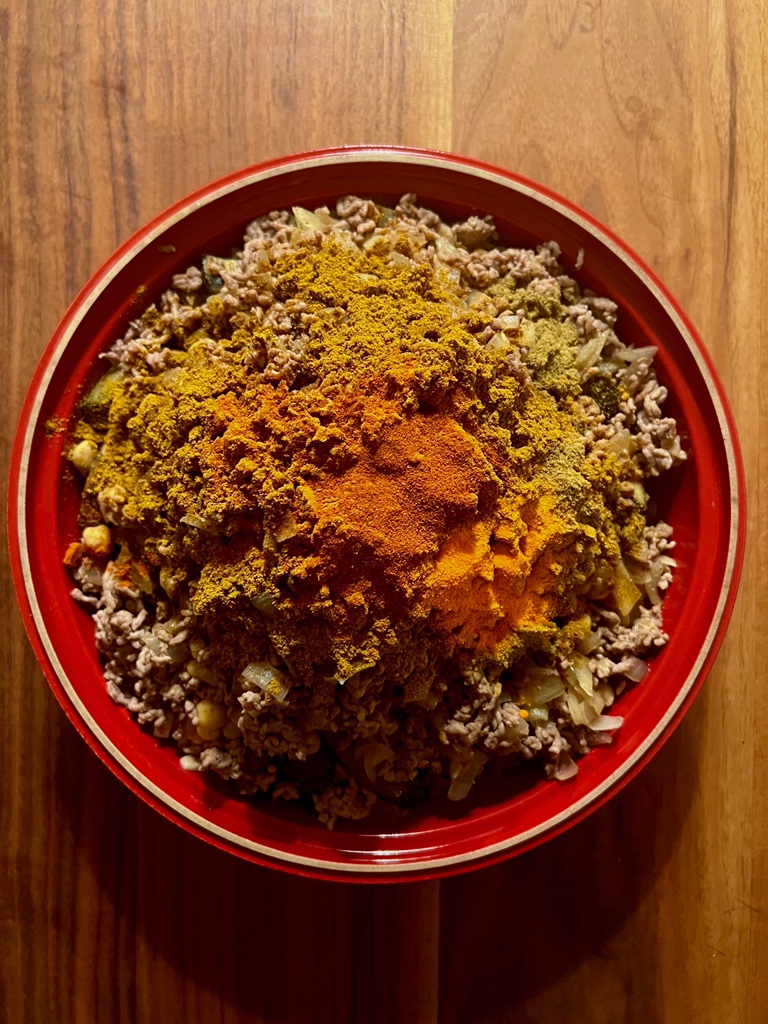
You need to fill the tagine with water or broth of your choice until the ingredients are almost covered.
To determine the right amount of salt, there is now a simple trick. Just salt the water or broth and taste it before you add it. If it has a pleasant taste for you, this will also apply to the finished tagine later.
After that, close the tagine with its lid and put it in the oven at 180 °C. You don’t have to preheat it, and we don’t do that either to protect our tagine vessel. However, if time should be of the essence, you can also preheat the oven; good tagines withstand this easily.
If you do not preheat, the potatoes are cooked after about 1 hour.
We let our tagine cook for 1:30 h and it was perfect for our taste.

Due to the cooking technique, every single part of the dish is incredibly succulent. Nothing is missing, and that is the magic of tagine.
Enjoy.
And may the taste be with you.
Ingredients (for 4 people):
(there are virtually no rules, so precise quantities are completely pointless)
2 – 3 eggplants, depending on their size
2 – 3 carrots
2 – 3 onions
Around 5 garlic cloves (and maybe 2 – 3 cm of ginger if you like)
Potatoes according to appetite
300 g of chickpeas
Around 700 ml of salted water or broth (depending on the size your tagine)
A little olive oil
Ras el-Hanout
300 g of organic minced beef (optional)

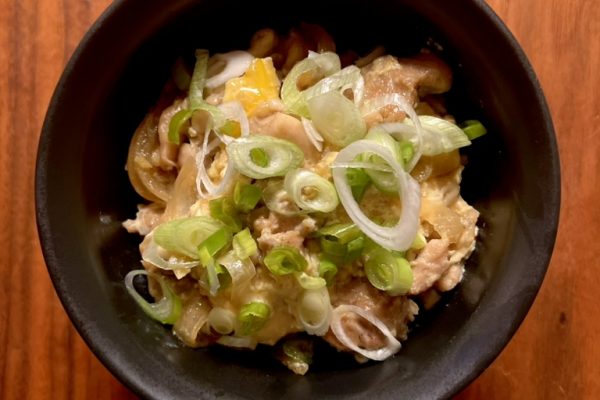
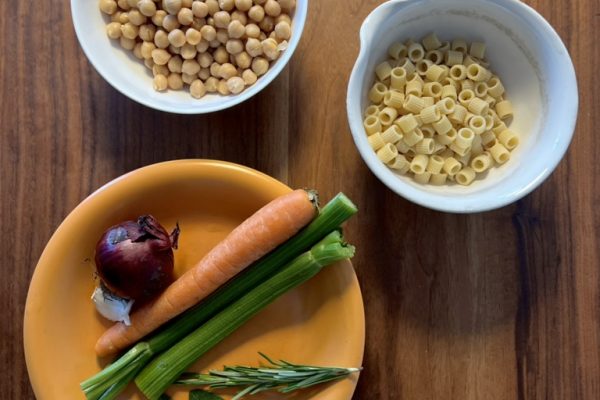
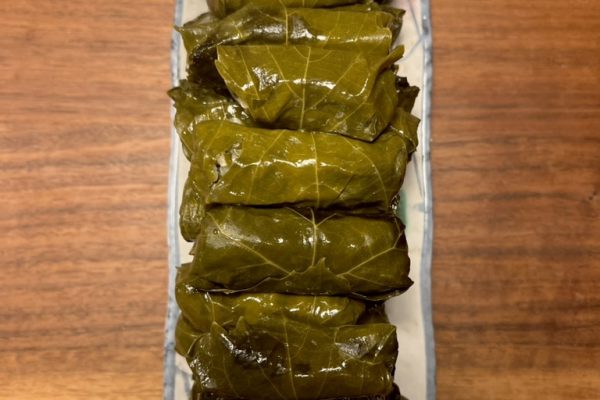
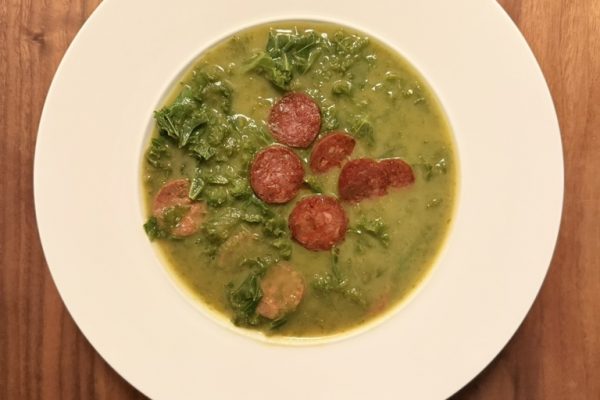

7 thoughts on “Eggplant Chickpea Tagine”